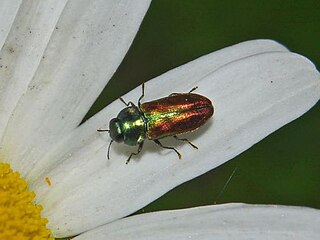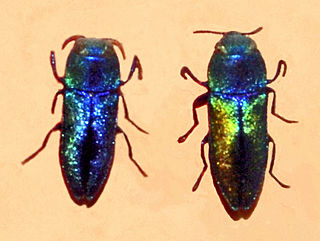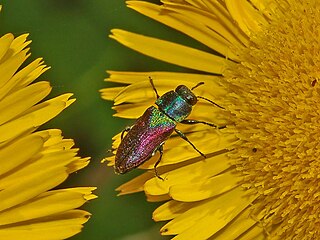
A cherry is the fruit of many plants of the genus Prunus, and is a fleshy drupe.

An apricot is a fruit, or the tree that bears the fruit, of several species in the genus Prunus.

A plum is a fruit of some species in Prunus subg. Prunus. Dried plums are often called prunes, though in the United States they may be labeled as 'dried plums', especially during the 21st century.

The cherry blossom, or sakura, is the flower of trees in Prunus subgenus Cerasus. Sakura usually refers to flowers of ornamental cherry trees, such as cultivars of Prunus serrulata, not trees grown for their fruit. Cherry blossoms have been described as having a vanilla-like smell, which is mainly attributed to coumarin.

Prunus serotina, commonly called black cherry, wild black cherry, rum cherry, or mountain black cherry, is a deciduous tree or shrub in the rose family Rosaceae. Despite its common names, it is not very closely related to commonly cultivated cherries. It is found in the Americas.

Prunus salicina, commonly called the Japanese plum or Chinese plum, is a small deciduous tree native to China, Taiwan and Southeast Asia. It is an introduced species in Korea, Japan, the United States, and Australia.

Prunus tomentosa is a species of Prunus native to northern and western China, Korea, Mongolia, and possibly northern India. Common names for Prunus tomentosa include Nanjing cherry, Korean cherry, Manchu cherry, downy cherry, Shanghai cherry, Ando cherry, mountain cherry, Chinese bush cherry, and Chinese dwarf cherry.

Prunus domestica is a species of flowering plant in the family Rosaceae. A deciduous tree, it includes many varieties of the fruit trees known as plums in English, though not all plums belong to this species. The greengages and damsons also belong to subspecies of P. domestica.

Potamogeton lucens, or shining pondweed, is an aquatic perennial plant native to Eurasia and North Africa. It grows in relatively deep, still or slow-flowing, calcareous freshwater habitats.

Prunus avium, commonly called wild cherry, sweet cherry or gean is a species of cherry, a flowering plant in the rose family, Rosaceae. It is native to Europe, Anatolia, Maghreb, and Western Asia, from the British Isles south to Morocco and Tunisia, north to the Trondheimsfjord region in Norway and east to the Caucasus and northern Iran, with a small isolated population in the western Himalaya. The species is widely cultivated in other regions and has become naturalized in North America, New Zealand and Australia.

Anthaxia nitidula is a species of jewel beetles belonging to the family Buprestidae, subfamily Buprestinae.

Anthaxia thalassophila is a species of jewel beetle belonging to the family Buprestidae, subfamily Buprestinae.

Anthaxia is a genus of beetles in the family Buprestidae.

Anthaxia cichorii is a species of jewel beetle belonging to the family Buprestidae, subfamily Buprestinae.
Anthaxia inornata is a species of metallic wood-boring beetle in the family Buprestidae. It is found in North America. It was described by Randall in 1838. It is 4-8 mm in size.
Anthaxia simiola is a species of metallic wood-boring beetle in the family Buprestidae. It is found in North America.
Prunus webbii is a species of Prunus found growing around the Mediterranean Sea, from Sicily, through Greece, Crete and the Aegean Islands, the Balkans and Anatolia, and possibly as far as Iraq or Iran. It is also found in certain areas of Spain and Northern Africa. A dense spiny shrub or small tree with extremely bitter seeds, it is thought to have contributed with some genes to the domesticated almond Prunus dulcis, although the extent of the contribution is debated and not yet fully understood.
Hanak's dwarf bat or Hanak's pipistrelle is a species of bat only found in Cyrenaica, Libya and Crete, Greece.
Nance Wood is a woodland Site of Special Scientific Interest (SSSI) near Portreath, west Cornwall. The site was first notified in 1951 for its almost pure dwarf, sessile oak coppiced woodland, good bryophyte flora and Irish spurge, which is found in only two localities in Britain.

Anthaxia croesus is a species of jewel beetle belonging to the family Buprestidae, subfamily Buprestinae.















